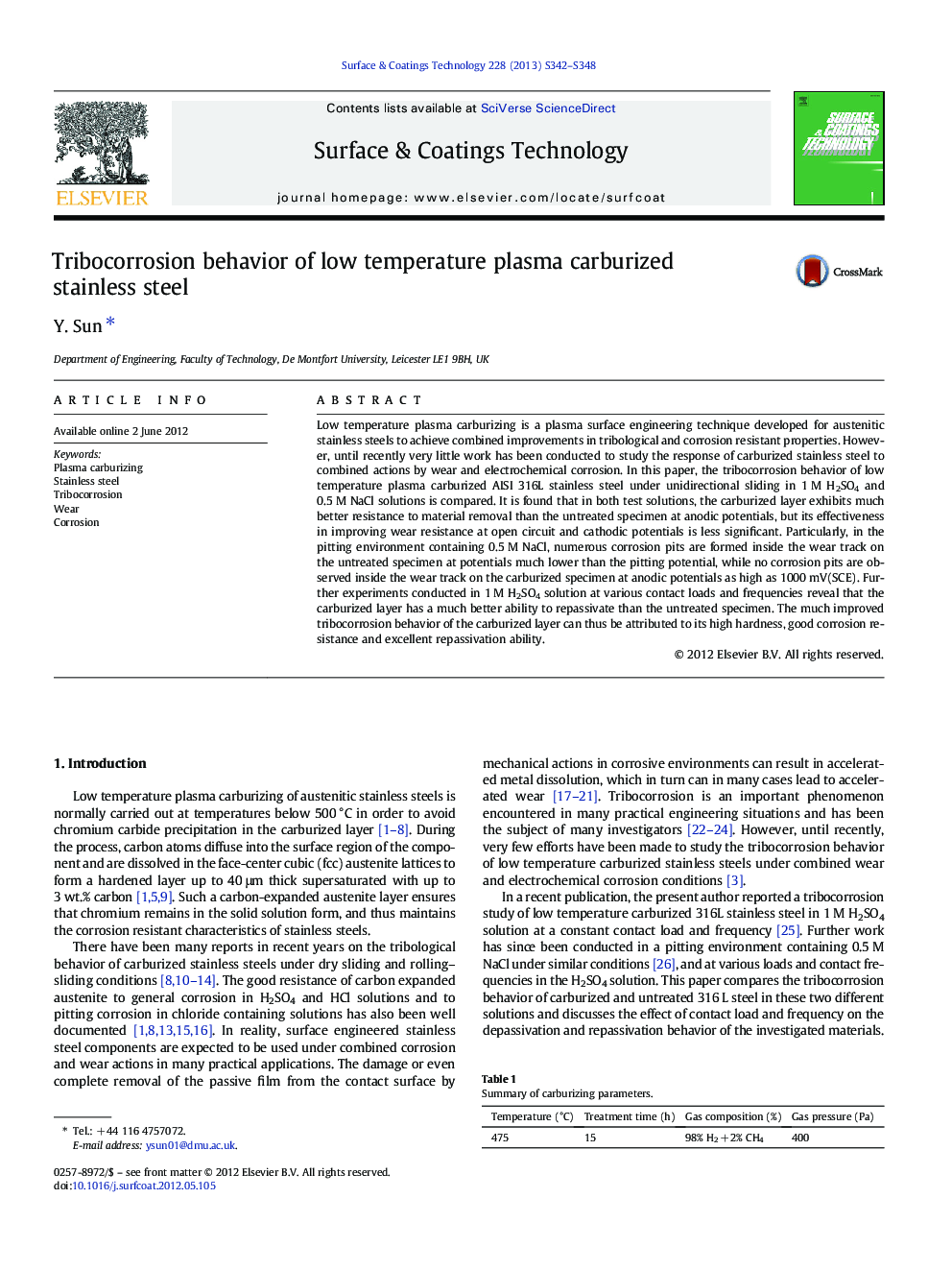| Article ID | Journal | Published Year | Pages | File Type |
|---|---|---|---|---|
| 1657855 | Surface and Coatings Technology | 2013 | 7 Pages |
Low temperature plasma carburizing is a plasma surface engineering technique developed for austenitic stainless steels to achieve combined improvements in tribological and corrosion resistant properties. However, until recently very little work has been conducted to study the response of carburized stainless steel to combined actions by wear and electrochemical corrosion. In this paper, the tribocorrosion behavior of low temperature plasma carburized AISI 316L stainless steel under unidirectional sliding in 1 M H2SO4 and 0.5 M NaCl solutions is compared. It is found that in both test solutions, the carburized layer exhibits much better resistance to material removal than the untreated specimen at anodic potentials, but its effectiveness in improving wear resistance at open circuit and cathodic potentials is less significant. Particularly, in the pitting environment containing 0.5 M NaCl, numerous corrosion pits are formed inside the wear track on the untreated specimen at potentials much lower than the pitting potential, while no corrosion pits are observed inside the wear track on the carburized specimen at anodic potentials as high as 1000 mV(SCE). Further experiments conducted in 1 M H2SO4 solution at various contact loads and frequencies reveal that the carburized layer has a much better ability to repassivate than the untreated specimen. The much improved tribocorrosion behavior of the carburized layer can thus be attributed to its high hardness, good corrosion resistance and excellent repassivation ability.
► Carburizing is effective in improving tribocorrosion behavior of the steel. ► Carburizing is beneficial in reducing anodic current and pitting during sliding. ► Carburized specimen has better ability to resist depassivation during sliding. ► Carburized specimen has the ability to repassivate after sliding.
